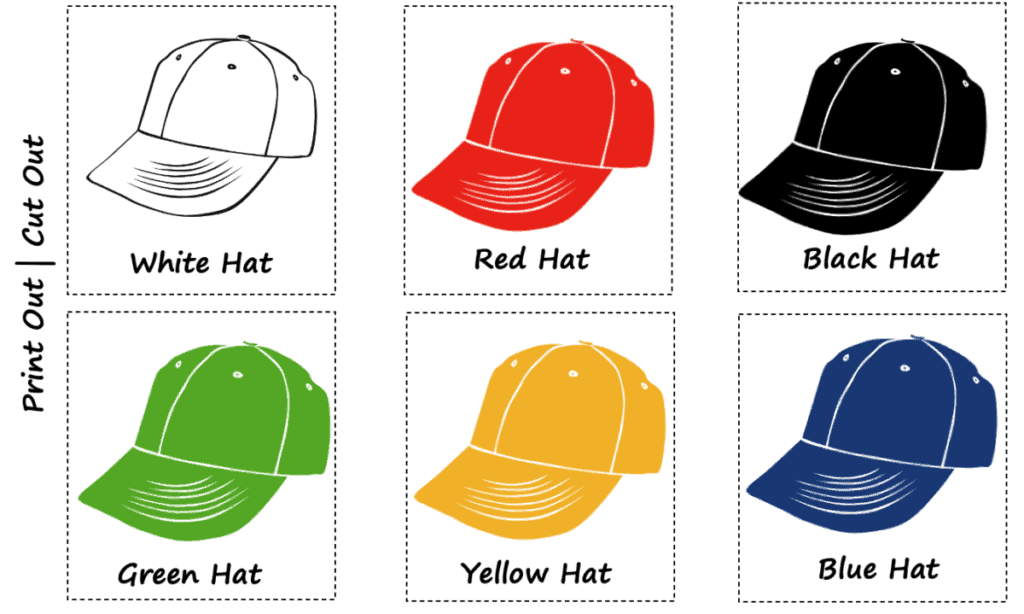Decision-making is a highly complex process, especially when it includes a group of people, To make a decision, a team goes through a discussion involving opinions offered by different members where some ideas come forward, while others get buried and tossed aside. Often, certain team members will dominate the discussion and impose their ideas and others may struggle for a chance to offer any input.
This may impede one of the greatest advantages of teamwork – the opportunity to get diverse opinions, unique perspectives, and valuable insights from different team members in order to make the best possible decision.
Different types of individuals will have different approaches to the problem and group discussion, when working properly, should balance these diverse ideas. The best decisions are always made when several ways of viewing the problem are taken into consideration.
However, this is easier said than done, as most people are wired to think and reason in a specific way, mainly depending on their personality type. So, the more optimistic person may approach the problem differently than the cautious one, or the analytical thinker will offer different solutions than the more emotional individual.
Therefore, trying to consider multiple angles at the same time and align the team where everyone has their own perspective can feel very confusing. This may seem chaotic, and it often is. Therefore, it’s necessary to bring some order into this chaos and six thinking hats is a perfect tool to do it.
Table of Contents
What is the Six Thinking Hats Technique?
The 6 thinking hats technique was created and developed by a Maltese physician, psychologist, and philosopher Edvard the Bono

The main purpose of the six thinking hats is to foster and structure creative discussions and it does so by providing tools to ensure that various thinking styles and a broad variety of different perspectives are represented.
This allows teams to look at the problems from different angles and uncover potential solutions that may have been overlooked otherwise. Furthermore, the 6 Hats method removes all unnecessary conflicts and disputes that are often the stumbling blocks hindering creative discussion.
Per De Bono, his technique eliminates the major flaw of the Western way of thinking – the argument system, where one individual expresses an opinion and the other challenges it. Six thinking hats introduces parallel thinking as a much more efficient way of solving the problem by having everyone move in the same direction instead of getting stuck in a debate.
How Does the Six Thinking Hats Technique Work?
The six thinking hats method works by assigning six metaphorical hats to different types of human thinking. In this approach, each thinking perspective is represented by a different hat colour.
During a discussion, each group or individual talks about the issue from their hat’s perspective, meaning that the team has a chance to consider the problem in six different ways.
This allows for careful consideration of every viewpoint and by the time all six hats are “tried out,” the decision maker should have a valuable collection of diverse insights which can help reach the optimal solution or make an informed decision on the next steps.
What Do Six Thinking Hats Represent?
To better understand how the 6 thinking hats method works, we’ll run through each of the six hats and explain what they represent and how they may contribute to solving an issue. Note that the sequence in which hats take turns is not fixed, but will depend on the type of the project and the problem that is supposed to be solved.
Blue Hat
The blue hat, or “the conductor’s hat” is used when the group is focused on managing the meeting and forming the agenda and goals of the discussion. The blue hat mode guides the thinking process to move along the best possible route and makes sure that the 6 hats technique is properly applied.
The most common questions discussion participant may ask when using the blue hat include how to define the problem, what are the desired outcomes, how will the 6 hats process be applied, or what kind of decision should the team members arrive at the end of the meeting, Often, a single person will wear a blue hat throughout the discussion and act as a moderator, while the others will be asked to use it at the start of the discussion to frame the process and at the end, to discuss the outcome and the next steps.
To illustrate, we’ll use a practical example from the business environment. Imagine that a company is looking to introduce a four-day workweek for all its employees. Before moving on to discussing different perspectives on the potential benefits and downsides of this decision, the blue hat will specify the procedure, determine which hats will be worn and in which order, and establish what kind of decision should be made at the end of the meeting.
White Hat
White hat, or “the factual hat” represent the facts and information about the issue at hand. As the purpose of white hat mode is to gather information, it won’t just deal with the already available data, but also identify pieces of information that are missing and should be collected for the successful solution of the problem.
While wearing the white hat, the discussion participants consider what is already known, what information is required, and how can the missing information be gathered. White hat only implies looking at the facts and information, without going deeper into interpreting them.
In our example, the responses while wearing the white hat may include details on which four days are considered, how long will the work day in the new system last, or will all staff work on the same four days.
Red Hat
The red hat, or “the hat for the heart,” represents emotions, instincts, and feelings stakeholders may have about the particular problem. While wearing this hat, you’re invited to share your different emotions, such as love or hate, but not required to add a logical justification to your response.
The purpose of the red hat doesn’t include establishing the reasoning behind the feelings. That’s why it’s best to have the team wear the red hat for as little time as possible, so the response will rely on the gut reaction, without too much overthinking.
Moving on with our example, under the red hat, the participants will offer responses that portray their initial feeling about the four-day workweek. These may include anxiety about having less time to complete the required tasks or happiness about the possibility of spending more time with the family.
Yellow Hat
Yellow hat, or “the optimist’s hat.” represents the positive way of looking at the issues. This means considering the problem in the best possible light and focusing on the potential benefits of the proposed ideas. Using the lens of optimism, the team looks to identify all factors that can make the idea successful and explore the potential short and long-term advantages of applying the proposed solution.
Thinking under the yellow hat must always have a logical justification and be backed by evidence. Otherwise, it’s nothing more than a positive gut feeling and therefore, would fall under the scope of the red hat.
Using the yellow hat in our example would have the team would suggest the tangible benefits of the four-day workweek for the organisation. This could include the fact that the staff would come to work refreshed and relaxed after having more free time, and, therefore, more motivated and ready to contribute to the organisational success.
Black Hat
Black hat, or “the judge’s hat,” stands in the opposition to the red hat, and represents a cautious and defensive approach to the problem. Under the black hat, the team considers the potential scenarios that would be the opposite of the desired goals and could lead to the worst possible outcome.
The focus is on assessing the risks involved and issuing warnings about the issues that may prevent the solution from working. The responses that come out of black hat thinking are usually very valuable as they can point to the idea’s flaws and save the organisation a lot of time and money, and prevent more serious problems.
Back to our example, thinking under the black hat may lead to the conclusion that a four-day workweek will create more challenges in dealing with customers and result in lower productivity.
Green Hat
Green hat, or “the creative hat,” represents creative thinking and is used to spark new and original ideas. It allows the team to look at the problem from a creative perspective and suggest innovative solutions.
The green hat fosters free-flowing discussions and encourages participants to think outside the box. It helps the team escape tunnel vision and discover new options besides the obvious ones. Often, the green hat thinking will provide solutions to the challenges presented under the black hat.
In our example, thinking under the green hat may result in an innovative way of organising the four-day work week, such as implementing the two days on, two days off work schedule.
Benefits of Six Thinking Hats
Implementing the 6 thinking hats method can deliver multiple benefits to the organisation. Below is a brief overview of the most significant advantages of using this technique to drive and structure the discussion.
- Better organisation of the thinking process
- Increased creativity and more innovative problem solving
- Developing individual thinking skills, such as critical thinking and curiosity
- Higher productivity, achieving more results in less time
- Enhanced decision-making ability
- Shared understanding and greater inclusivity within the teams
- Improved interpersonal skills, including listening and communication

Six Thinking Hats Template
A six thinking hats template is included as 1 of the 50 templates in the project template bundle.
The six thinking hats technique template should be used as a brainstorming technique to encourage different perspectives on an idea or solution to a problem.
It is recommended that you have 5-6 participants when using this technique unless you ask your group to collectively comment on each of the hats in turn.
The six thinking hats template is in google slide format, MS Power Point format, MIRO format.



